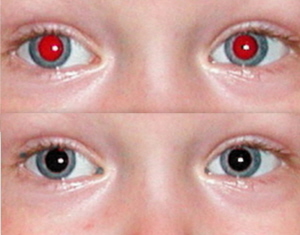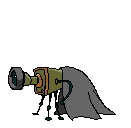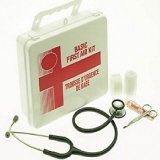|
How to Prevent RedEye in Your Photographs
It happens to you all the time you take photos of family or friends just to find out later on that the eyes in the photos have a dominant redness to them. You are not alone this happens everyday to all of us. In this article we will try to understand why this happens and how it can be prevented. Why does this happen in photos? It is a phenomenon that happens only when taking photos using a flash. When taking photos in day light or when in high ambient light scenarios people’s eyes look normal. When taking pictures in low ambient light scenarios using a flash the result many times is redness in the people’s eyes.
In some scenarios the redeye is evident while in others it is mild or doesn’t seem to appear at all. One of the main factors for that is the state of the pupils. If the pupils are dilated (for example the pupils dilate in darkness or when drinking alcohol) more light is reflected back from the retina and the eyes in the photo appear redder.

Common way to reduce redeye The most commonly used method to reduce this problem is activating the camera’s built-in redeye reduction feature. The reduction feature is very simple yet effective. When turned on the camera shoots a series of pre-flash strobes followed by one more strobe when actually taking the photo. The reduction feature does what it is supposed to do: reduce the effect but almost never is it completely prevented. There are many limitations to this feature for example pupils reaction time to light can vary. In addition this feature can have a side-effect that results in photos having people’s eyes closed. The reason is that the pre-flash strobes blind the people and cause them to close their eyes. Other ways to prevent red-eye Understanding what causes red-eye helps being more creative in preventing it. Following are some ways to prevent this other than using the built-in camera reduction feature: Increasing the light where photos are taken (for example by turning on the lights in a room before taking photos of people) causes people’s pupils to reduce in size and eye redness to reduce. Point the flash away from the eyes. Since red-eye is caused by flash light reflected from the retina the best way to prevent this would be to eliminate such reflection as much as possible. In most cameras the angle between the flash and the lenses is narrow (this is especially true for built-in flash and pocket cameras) causing most of the flash to bounce back from the retina to the lenses. Red-eye can also be removed after photos are already taken by using photo processing software on your PC. Most digital cameras include a CD with PC software that embeds this feature. Although this method doesn’t eliminate the red-eye from the source it can result in a practically red-eye free photo. Some software is better than others some are manual while others automatically identify the red-eyes and process that area to revert to normal eye colours. Return to Photography
|





 Preventing RedEye
Preventing RedEye
 The reason for the colour red is simple – when flash light from the camera hits the eyes it penetrates and is reflected back from the retina. The colour of the reflected light is red because the light is actually reflected from the blood in the retina.
The reason for the colour red is simple – when flash light from the camera hits the eyes it penetrates and is reflected back from the retina. The colour of the reflected light is red because the light is actually reflected from the blood in the retina.






